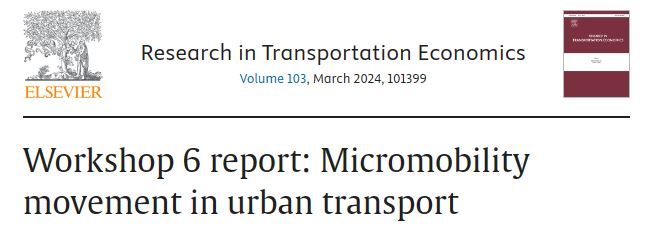María Attard, Camila Balbontín
Abstract
The theme of micromobility was introduced for the first time in Thredbo 17 as the growth of shared and privately-owned e-scooters, bicycles and e-bicycles continue to affect the nature and structure of urban transport systems worldwide. And whilst in some cases they challenge the priority afforded to the private car, in others they complement already existing and well-established greener transport modes such as cycling and walking. The discussion in this workshop focused on a number of questions looking at the benefits of micromobility and discussing the main incentives for their use as an urban mode of transport, questioning the role of government and describing the potential threats, if any, to public transport systems, in what we expect for the future of micromobility. Five papers showcased evidence on the use of micromobility, from e-scooters in Norway and Australia, to public bicycles in South Korea and The Netherlands. Each of the questions discussed in the workshop is reported in this paper. The need for multimodal integration is evident and remains essential to ensure complementarity across transport in cities. However, other concerns such as the need for regulation, education/enforcement structures, stronger business models and more effective tendering procedures have been identified and discussed. A long list of future research topics in the area of micromobility is provided and some themes for Thredbo 18 are recommended.
